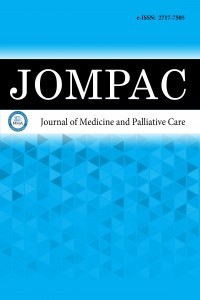1.
Vos T, Allen C, Arora M, et al. Global, regional, and nationalincidence, prevalence, and years lived with disability for 310diseases and injuries, 1990-2015: a systematic analysis for the GlobalBurden of Disease Study 2015. Lancet. 2016;388(10053):1545-1602.
2.
Feigin VL, Norrving B, Mensah GA. Global burden of stroke.Circ Res. 2017;120(3):439-448.
3.
McDonagh TA, Metra M, Adamo M, et al. 2021 ESC Guidelinesfor the diagnosis and treatment of acute and chronic heart failure.Eur Heart J. 2021;42(36):3599-3726.
4.
Heidenreich PA, Bozkurt B, Aguilar D, et al. 2022 AHA/ACC/HFSA guideline for the management of heart failure: a report ofthe American College of Cardiology/American Heart AssociationJoint Committee on Clinical Practice Guidelines. J Am CollegeCardiol. 2022;79(17):e263-e421.
5.
Pullicino PM, McClure LA, Wadley VG, et al. Blood pressureand stroke in heart failure in the REasons for GeographicAnd Racial Differences in Stroke (REGARDS) study. Stroke.2009;40(12):3706-3710.
6.
Kannel WB, Wolf PA, Verter J. Manifestations of coronarydisease predisposing to stroke. The Framingham study. JAMA.1983;250(21):2942-2946.
7.
Witt BJ, Brown RD Jr, Jacobsen SJ, et al. Ischemic stroke after heartfailure: a community-based study. Am Heart J. 2006;152(1):102-109.
8.
Kang SH, Kim J, Park JJ, et al. Risk of stroke in congestiveheart failure with and without atrial fibrillation. Int J Cardiol.2017;248:182-187.
9.
Adelborg K, Szepligeti S, Sundboll J, et al. Risk of stroke inpatients with heart failure: a population-based 30-year cohortstudy. Stroke. 2017;48(5):1161-1168.
10.
Alberts VP, Bos MJ, Koudstaal P, et al. Heart failure and the riskof stroke: the Rotterdam Study. Eur J Epidemiol. 2010;25(11):807-812.
11.
de Simone G, Devereux RB, Chien S, Alderman MH, AtlasSA, Laragh JH. Relation of blood viscosity to demographicand physiologic variables and to cardiovascular risk factors inapparently normal adults. Circulation. 1990;81(1):107-117.
12.
Cho DJ. Blood viscosity abnormalities in large and small vesseldiseases: future directions for plasma medicine. Plasma Med.2012;2(4):221-235.
13.
Grotemeyer KC, Kaiser R, Grotemeyer KH, HusstedtIW. Association of elevated plasma viscosity with smallvessel occlusion in ischemic cerebral disease. Thromb Res.2014;133(1):96-100.
14.
Cagli EK, Gurel IE, Ozeke O, et al. Blood viscosity changes in slowcoronary flow patients. Clin Hemorheol Microcirc. 2011;47(1):27-35.
15.
Tamariz LJ, Young JH, Pankow JS, et al. Blood viscosity andhematocrit as risk factors for type 2 diabetes mellitus: theatherosclerosis risk in communities (ARIC) study. Am JEpidemiol. 2008;168(10):1153-1160.
16.
Özcan Çetin EH, Çetin MS, Çağlı K, et al. The association ofestimated whole blood viscosity with hemodynamic parametersand prognosis in patients with heart failure. Biomark Med.2019;13(02):69-82.
17.
Brämer GR. International statistical classification of diseases andrelated health problems. Tenth revision. World Health Stat Q.1988;41(1):32-36.
18.
Hindricks G, Potpara T, Dagres N, et al. 2020 ESC Guidelines forthe diagnosis and management of atrial fibrillation developedin collaboration with the European Association for Cardio-Thoracic Surgery (EACTS): The Task Force for the diagnosisand management of atrial fibrillation of the European Society ofCardiology (ESC) developed with the special contribution of theEuropean Heart Rhythm Association (EHRA) of the ESC. EurHeart J. 2021;42(5):373-498
19.
Kleindorfer DO, Towfighi A, Chaturvedi Seemant, et al. 2021Guideline for the prevention of stroke in patients with strokeand transient ischemic attack: a guideline from the AmericanHeart Association/American Stroke Association. Stroke.2021;52(7):e364-e467.
20.
Mitchell C, Rahko PS, Blauwet LA, et al. Guidelines forperforming a comprehensive transthoracic echocardiographicexamination in adults: recommendations from the AmericanSociety of Echocardiography. J Am Soc Echocardiogr. 2019;32(1):1-64.
21.
Pullicino P, Homma S. Stroke in heart failure: atrial fibrillationrevisited? J Stroke Cerebrovasc Dis. 2010;19(1):1-2.
22.
Haeusler KG, Laufs U, Endres M. Chronic heart failure andischemic stroke. Stroke. 2011;42(10):2977-2982.
23.
Loh E, Sutton MS, Wun CC, et al. Ventricular dysfunction andthe risk of stroke after myocardial infarction. N Engl J Med.1997;336(4):251-257.
24.
Witt BJ, Gami AS, Ballman KV, et al. The incidence of ischemicstroke in chronic heart failure: a meta-analysis. J Card Fail.2007;13(6):489-496.
25.
Zhou H, Xu T, Huang Y, et al. The top tertile of hematocritchange during hospitalization is associated with lower risk ofmortality in acute heart failure patients. BMC Cardiovasc Disord.2017;17(1):235.

